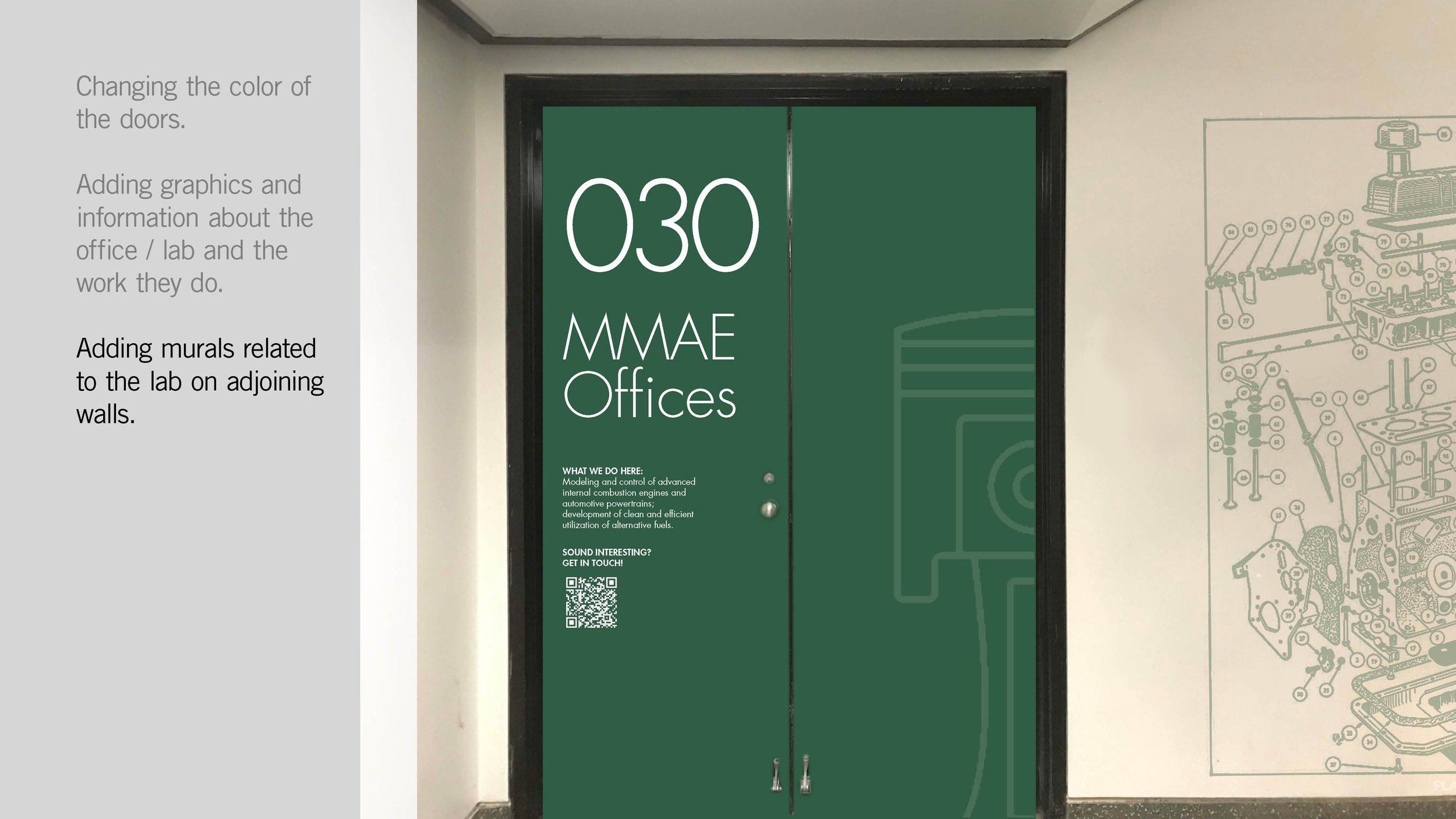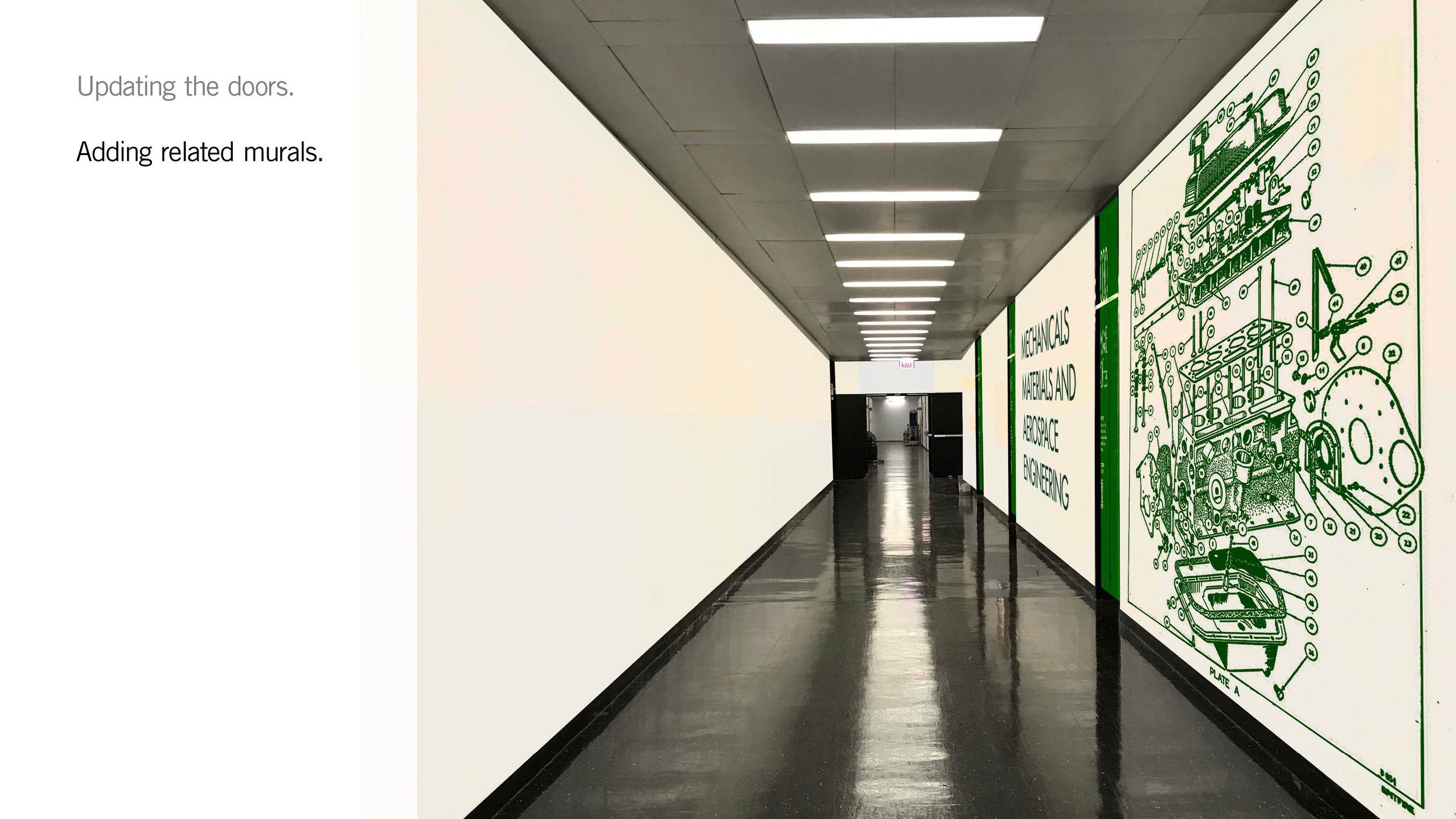Advanced Engine Control Lab
Understanding work culture to enhance learning experiences
2021
Design Research
Background
The Advanced Engine Control Lab sits within Illinois Institute of Technology's Materials and Mechanical Engineering Department. Under the guidance of Dr Carrie Hall, the lab studies dynamics and controls of advanced internal combustion engines. Apart from Dr Hall, the lab included 2 PhD Students, 3 graduate students, and 2 undergraduate students.
As part of the Intro to Observing Users course, we were taught a number of qualitative research techniques. This final project is aimed at applying these techniques to a real world scenario, i.e. the Advanced Engine Control Lab.
Goal
The goal was to develop foundational insights about the lab, the people that use it, and the culture within the space.
Additional goals included understanding safety protocols and procedures within the lab and how COVID has impacted the work, the culture, the people and the safety protocols in the lab.
Research
We used a variety of research methods to delve into the culture of the lab.
User Interviews, 6x
We conducted interviews with a number of students to better understand their background, what brought them to the field of engineering, what brought them to Chicago and to Illinois Tech, and how they first became interested in engines and engine control.
Shadowing, 12 hours, over 4 weeks
We spent time in the lab, shadowing students to understand what they work on, and how they use different parts of the lab and campus. This gave us interesting insights into communication and the transfer of knowledge, and the nature of the work they do in the lab.
User Diaries, 4x, 2 weeks each
The students often have multiple classes and activities throughout the week, and may only spend a few hours in the lab. We wanted to track their work over a longer period of time to understand their schedules, workload and time management. We also wanted to track who they interact with through the week, and how their work and interactions affected their emotions.
Space Mapping
We measured the lab, and made a 3D model to better understand the space and the arrangement of tools and equipment. We also asked participants about the areas in which they spend time, what work they do in these areas, and the safety protocols they need to follow in different spaces. Through this, we also understood the flow of people within the space, which areas were un-used and why.
Insights
We then compiled our research into a set of “stories”, each derived from our observations, the implications on the culture and work at the lab, and our recommendations.
Organisation & Transfer of Knowledge
The lab is a revolving door. With a mix of PhD's, Graduate and Undergraduate students using the space, the time any single person is associated with the lab ranges from one semester (undergrad) to a maximum of 4 years (PhD Student) with Dr Hall being the only permanent fixture.
From Our Research
Everyone at the lab acknowledges that it could be better organized. We heard phrases being used like "Messy Organized" or " Controlled Chaos" to describe the space.
While there are occasionally efforts taken to clean up and organize the space, the lab slowly creeps back to a state of "chaos".
Implications
The lack of knowledge transfer can slow down projects. Waiting for a former student to reply to question about a specific tool could mean hours of waiting. Worse still, not knowing where a tool or part is can lead to delays. All these little delays can add up and lead to frustration for everyone as work isn't progressing, and data isn't being collected.
Poor organization leads to delays. It can also lead to accidents and damage to equipment, due to use of improper tools. This leads to frustration, and further delays. The lack of time means there's not enough time or attention given to organization.
This becomes a cycle, which is difficult to get out of.
Recommendations
Immediate:
A video guide introducing the space, and the “rules” for the space. Printed/online guides to the space and the tools.
Visible Tool Storage; such as pegboards on the wall.
Clearly defined spaces for tools.
Shadow-boards to go with pegboards
Long Term:
Develop a culture of organization. Ensure everyone always cleans tools, and puts them back in the right space.
Always be “knolling”.
Develop a culture of documentation. Ensure everyone spends time at the end of each session in the lab to document what they did, and what needs to be done.
Check-out list for borrowing tools.
A Kanban system could be useful for tracking both tools and tasks.
Environment & Networking
The design of a space can how people use it. Clear way finding and information can influence how people approach, and move through, a space; while materials and lighting set the tone for the activities within the space. At a deeper level, the design of the space can impact the psychology and behavior of those using the space for an extended period of time.
The RE building houses a number of labs, all of which are conducting exciting and innovative research. But the basement space lacks any character, or identifying information. This has 2 impacts: new students/visitors can easily get lost, and even those working in the space don't know what is happening in the other labs.
From Our Research
In the interviews and user diaries, the space was universally described as depressing. The lack of natural light and reference to passage of time was especially called out. People also said the only way they know what is going on in other labs is because the have friends working there.
Implications
Research labs can only grow if they are able to attract new students. Being able to easily find a lab, understand what research goes on there, who works there and who to get in touch with can help with that. Having a space that is inviting rather than intimidating is also important for new students or visitors.
Collaboration and networking could aid in furthering research for different labs. Problems in one lab could be solved with knowledge or tools from another. Being able to understand what is being used, and what could be borrowed from another lab would help reduce costs and further research.Sharing of upcoming proposals, grants and competitions could also benefit the labs. This networking could also help with career building for students and researchers, as they understand possible career paths and opportunities.

























